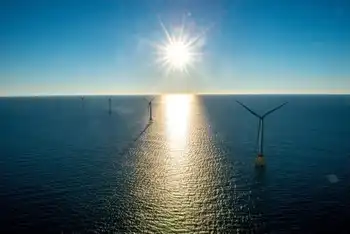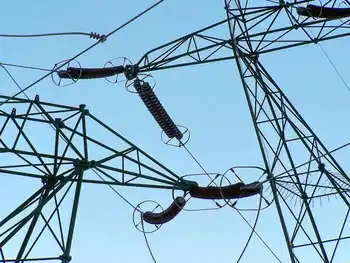Millions without power in Texas
By Toronto Star
Electrical Testing & Commissioning of Power Systems
Our customized live online or in‑person group training can be delivered to your staff at your location.

- Live Online
- 12 hours Instructor-led
- Group Training Available
Pump prices jumped above $5 per gallon in some parts of the United States after the hurricane battered the heart of the U.S. oil industry, spreading fears of gasoline supply disruptions.
As the floodwaters began to recede from the first hurricane to make a direct hit on a major U.S. city since Katrina in 2005, authorities planned to go door-to-door into the night to reach an untold number of people across the Texas coast who rode out the storm and were still in their homes, many without power or supplies.
Many of those who did make it to safety boarded buses without knowing where they would end up, and without knowing when they could return to what was left of their homes, if anything.
"I don't know what I'll be coming back to. I have nothing," said Arma Eaglin, 52, who was waiting for a bus to a shelter in San Antonio after leaving her home and wading through chest-deep water with nothing but her clothes. "I'm confused. I don't know what to do."
Ike left refineries and pipelines idled and destroyed at least 10 offshore petroleum production platforms in the Gulf of Mexico, though it was too soon to know how seriously it would affect oil and gas prices.
Specifics about the size and production capacity of the destroyed platforms were not immediately available, but the damage was to a fraction of the 3,800 platforms in the Gulf. By comparison, Hurricane Katrina destroyed 44 platforms.
Pump prices jumped above $5 per gallon (roughly $1.32 a litre) in some parts of the U.S.
In Toronto, weekend gas prices hovered around $1.38 a litre.
Dan McTeague, Liberal incumbent in Pickering-Scarborough East, said Canadian motorists "should expect a healthy drop" in gas prices, but warned it could take two weeks before the situation returns to normal.
Ike was downgraded to a tropical depression as it moved into the nation's midsection and left more harm in its wake. Roads were closed in Kentucky because of high winds. As far north as Chicago, dozens of people in a suburb had to be evacuated by boat.
The storm lost most of its energy by the time it reached Ontario, but border communities were still hit with 30 to 40 millimetres of rain, while Toronto received about 15 to 20 millimetres, Environment Canada said.
Two million people were without power in Texas, Arkansas and Louisiana.
Of the 25 reported dead, seven were in hard-hit Texas, including one body found in a vehicle submerged in floodwater in Galveston. A 4-year-old Houston boy died of carbon monoxide poisoning from the generator his family was using for power. Many deaths, however, were outside of Texas as the storm slogged north.
Ike's 177 km/h winds and battering waves left Galveston without electricity, gas and basic communications. Officials estimated services might not be restored for a month.
"We want our citizens to stay where they are," a weary Mayor Lyda Ann Thomas said. "Do not come back to Galveston. You cannot live here right now."
Houston, the nation's fourth-largest city, was reduced to near-paralysis in some places. Power was on in downtown office towers, and Texas Medical Center, the world's largest medical complex, was unscathed and remained open. Both places have underground power lines.
Houston's two airports were set to reopen with limited service, but schools were closed until further notice, and the business district was shuttered.
Authorities said that 1,984 people had been rescued, including 394 by air. In addition to people who were literally plucked to safety, the figure includes people who were met by crews as they waded through floodwaters trying to get to dry ground.
Still others chose to remain in their homes along the Texas coast even after the danger of the storm had passed. There was no immediate count of how many people remained in their homes, or how many were in danger. The Red Cross reported 42,000 people were at state and Red Cross shelters.
The search-and-rescue effort was the largest in Texas history, including more than 50 helicopters, 1,500 searchers and teams from federal, state and local agencies.
Once evacuees were safe and dry, there was another problem – where they would go. Some buses went to shelters in San Antonio and Austin. Shelters across Texas scurried to find enough cots, and some arrived with little cash and no idea of what the coming days held.
From the city of Orange alone, near the Louisiana line, more than 700 people sought dry ground – "a Herculean effort to organize a reverse evacuation that nobody had ever planned for," Mayor Brown Claybar said.
Hundreds of people wrapped around a high school in Galveston, some with pets, overstuffed duffel bags and medicine as they waited to board a bus to a shelter. Some didn't know where they were going, and even more didn't know when they could return.
Two people who took a boat to check on a funeral home in Orange found dozens of caskets had popped above ground in the floodwaters. Only a chain-link fence kept them from drifting into the surrounding neighbourhood.
The storm also took a toll in Louisiana, where hundreds of homes were flooded and power outages worsened as the state struggles to recover from Hurricane Gustav, which struck over Labour Day.











